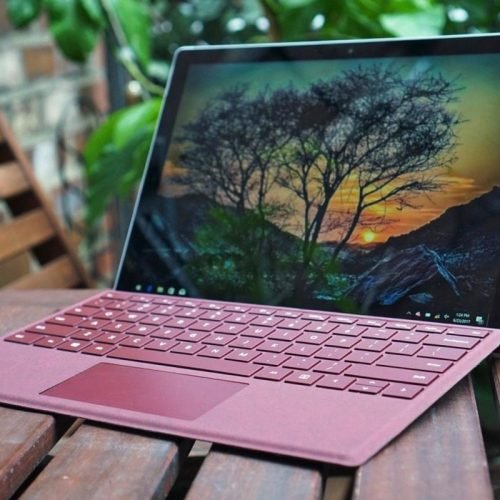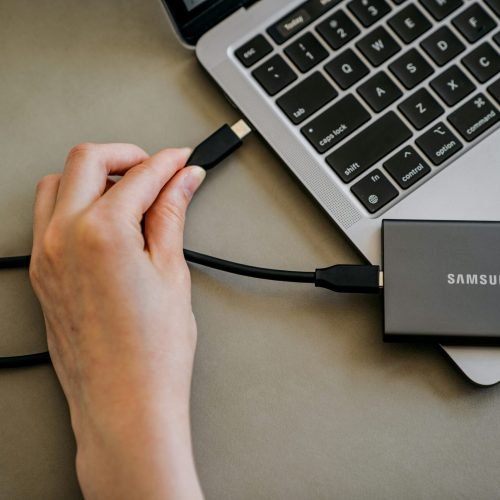
Understanding Touchscreen Devices
Touchscreen devices have revolutionized the way users interact with technology, providing an intuitive interface that allows for direct manipulation of on-screen content. Touchscreen laptops and tablets present users with distinct advantages and functionalities suited to various use cases. The fundamental difference between these two devices lies in their design and primary intended purposes. Touchscreen laptops typically combine the functionality of a traditional laptop with a touchscreen interface, allowing for more complex tasks such as extensive document editing and software development. In contrast, tablets are predominantly designed for portability and ease of use, excelling in media consumption and casual browsing.
Each device is characterized by specific features that cater to user needs. Touchscreen laptops often come equipped with a full keyboard, making them suitable for typing-intensive tasks. They usually offer more processing power, larger storage capacities, and the ability to run full desktop applications. On the other hand, tablets boast a lightweight and compact design, which enhances mobility. They often utilize app-centric interfaces, optimized for tasks like reading, gaming, and streaming, thereby providing a streamlined experience for users who prioritize convenience.
Understanding the various types of touchscreen technology can further inform the decision-making process. Capacitive touchscreens, commonly found in tablets, rely on the electrical properties of the human body and allow for multi-touch gestures, enhancing user interaction. Resistive touchscreens, often used in budget-friendly laptops, respond to pressure rather than touch, making them suitable for various environments but generally less responsive than their capacitive counterparts. Knowing these differences enables potential buyers to assess their priorities, whether they value processing power and versatility or portability and simplicity in a touchscreen device.
Pros and Cons of Touchscreen Laptops
Touchscreen laptops have gained popularity due to their enhanced functionality and versatility. One of the key advantages of touchscreen laptops is improved productivity. The ability to interact directly with the screen allows for more intuitive navigation and faster access to applications. For professionals in creative fields, the touchscreen capability can facilitate tasks such as digital drawing or photo editing, providing a more tactile and responsive experience compared to traditional laptops.
Moreover, touchscreen laptops combine the best features of both laptops and tablets, offering a two-in-one device that caters to various user needs. This flexibility allows users to switch seamlessly between typing on a keyboard for detailed tasks and utilizing touch gestures for quick interactions. The versatility of these devices makes them suitable for a range of activities, from business presentations to casual browsing or streaming content.
However, there are also potential drawbacks to consider. One significant disadvantage of touchscreen laptops is their weight. Typically, these devices are heavier than standard laptops, making them less convenient for mobile users who prefer lightweight options. Additionally, the battery life of touchscreen laptops can often be shorter due to the larger display and additional tech incorporated into these devices, potentially necessitating more frequent recharging.
Cost is another factor that cannot be overlooked. Touchscreen laptops tend to be pricier than traditional laptops with similar specifications, which may deter budget-conscious consumers. As such, these financial implications should be weighed against the enhanced functionality they provide.
In summary, touchscreen laptops present a unique set of advantages and disadvantages, making them suitable for specific users and tasks. Understanding these factors will assist in making an informed buying decision.
Pros and Cons of Tablets
Tablets are a prominent segment in the touchscreen device market, offering a blend of functionality and portability that appeals to a wide range of users. One of the primary advantages of tablets is their ease of use. With intuitive touch interfaces and lightweight designs, they allow for a straightforward user experience that is accessible to individuals of all ages. This is particularly beneficial for casual users, such as students or professionals who need to consume media, browse the internet, or read documents without the complexity of traditional laptop environments.
Portability is another significant benefit, as most tablets are compact and lightweight, making them ideal for on-the-go activities. Users can easily slip a tablet into a bag or carry it under their arm, allowing for effortless transport. Additionally, many tablets boast impressive battery life, often outlasting laptops under similar usage conditions. This durability means that users can engage with their device for extended periods without the need to frequently recharge, which is particularly advantageous for those who travel or work remotely.
However, tablets also come with notable limitations. For instance, their processing power is generally less robust compared to laptops, making them less suitable for demanding applications such as advanced gaming, video editing, or heavy multitasking. While some higher-end tablets may offer performance comparable to entry-level laptops, most do not support the same range of software and capabilities. Furthermore, multitasking can be cumbersome on tablets, as the interface may limit users’ ability to run multiple applications simultaneously or manage extensive tasks efficiently.
These pros and cons must be carefully considered when deciding whether a touchscreen laptop or a tablet best meets individual needs. Those seeking a device for simple, casual use may find significant value in a tablet, while users needing powerful performance might lean towards a laptop alternative.
Making the Right Choice for Your Needs
When it comes to choosing between a touchscreen laptop and a tablet, several factors must be considered to ensure the selected device aligns with your specific needs and lifestyle. Analyzing your primary usage scenarios is critical in making an informed decision. For instance, if your work heavily relies on multitasking and you utilize productivity software, a touchscreen laptop might be more suitable due to its larger screen and full keyboard, which can enhance efficiency during complex tasks.
On the other hand, if entertainment and portability are your priorities, a tablet could be the ideal choice. Tablets generally offer a lightweight design, making them easier to carry while traveling. They provide excellent capabilities for streaming videos, reading e-books, and casual web browsing, which cater to a more relaxed usage scenario.
Price points are another critical factor to consider. Touchscreen laptops often come at a higher price compared to tablets due to their advanced processing power and larger storage options. However, the investment could be justified if you require high performance and extensive features for professional tasks. It is essential to weigh the upfront costs against the long-term benefits that each device may offer based on your intended usage.
Operating systems should also be on the list of considerations. Touchscreen laptops typically run on Windows or macOS, which might be preferable for users familiar with these platforms and their respective software ecosystems. Meanwhile, tablets primarily utilize mobile operating systems such as iOS or Android, which provide a more app-centric experience. When evaluating performance metrics, consider how well each device can handle the applications and tasks you frequently engage in.
Ultimately, defining your priorities in terms of work requirements, entertainment preferences, and mobility will equip you to make the best choice between a touchscreen laptop and a tablet tailored to your unique lifestyle.



